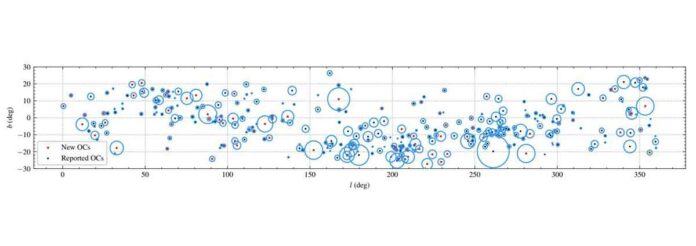Astronomers from the Shanghai Astronomical Observatory (SHAO) in China have discovered 101 new open clusters in the Milky Way galaxy. They have analysed data from ESA’s Gaia satellite for this discovery. The discovery was announced in a paper published on the arXiv pre-print repository on December 21.
Open clusters (OCs) are groups of stars that are gravitationally bound to each other and formed from the same giant molecular cloud. More than 1,000 of them have been discovered so far in the Milky Way. Scientists are still looking for more in the hope of discovering a variety of these stellar groupings. Studying them in depth could help us better understand the formation and evolution of our galaxy.
A team of astronomers led by SHAO’s Qin Songmei has discovered 101 new OCs in the solar neighbourhood. The discovery was made by running the clustering algorithms pyUPMASK and HDSBSCAN on data from Gaia’s Data Release 3 (DR3).
Songmei’s team discovered 324 open clusters. 101 of which were previously unknown. As a result of the discovery, the number of known nearby OCs increased by about 45 percent. The known 223 clusters’ parameters were updated by carefully comparing the spatial distribution and other properties to the previous cluster catalogue.
There are 19 OC pairs with a common origin and age differences of less than 30 million years among the newly discovered open clusters. Three groups with triple OCs have a spatial separation of less than 65 light years and age differences of less than 10 million years. Astronomers believe that these triplets formed from the same molecular cloud.
Using their “slicing” approach, the researchers discovered many nearby OCs with large spatial scales for the first time. They emphasised that their technique is thus very effective for searching for nearby OCs with a wide spatial distribution. It also demonstrated that many open clusters have a complex outer structure.
The authors of the paper concluded that more detailed analyses are needed to shed more light on the properties of the newly discovered OCs. More spectroscopic data for the member stars will be critical in determining the dynamical and chemical evolution of these clusters.

